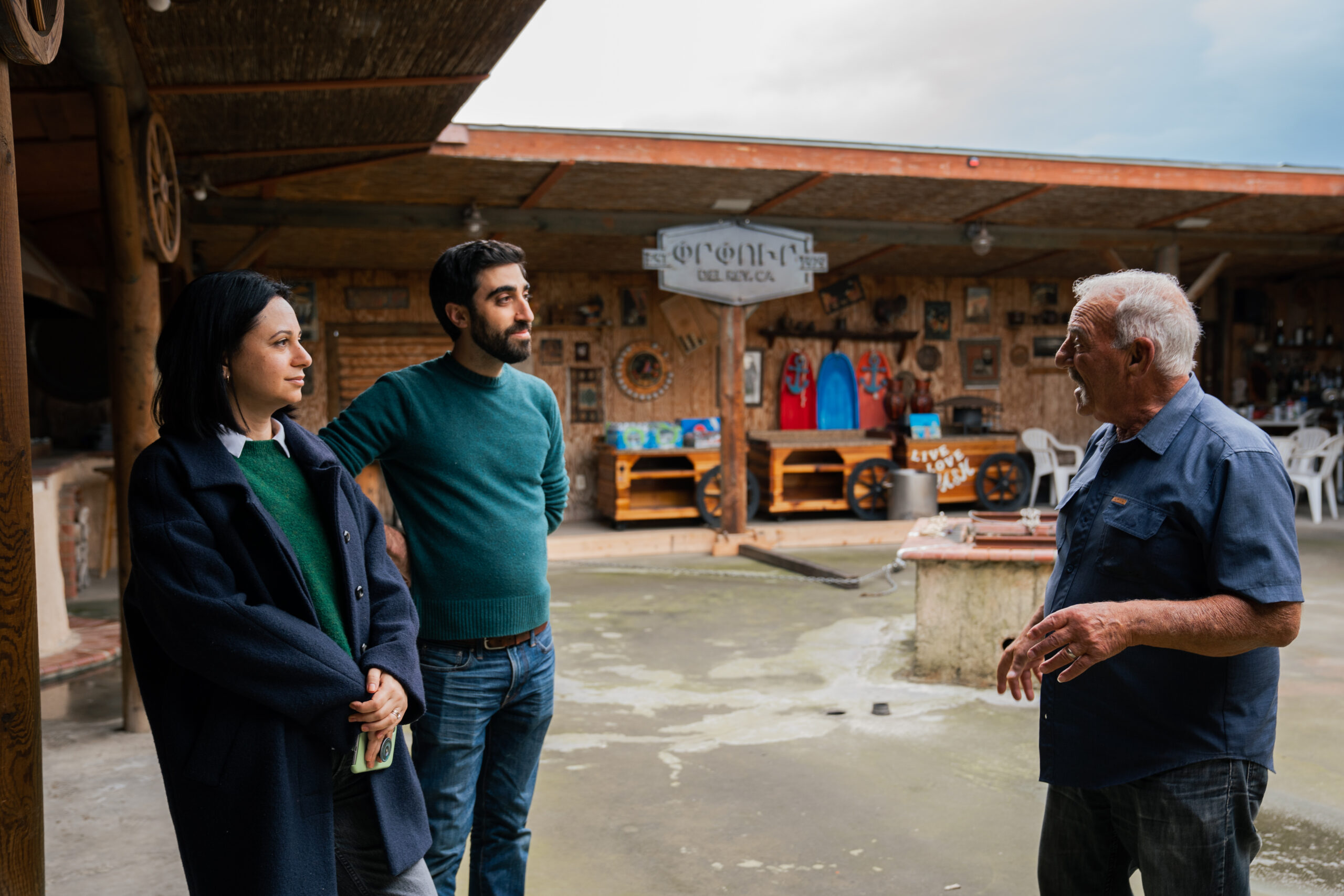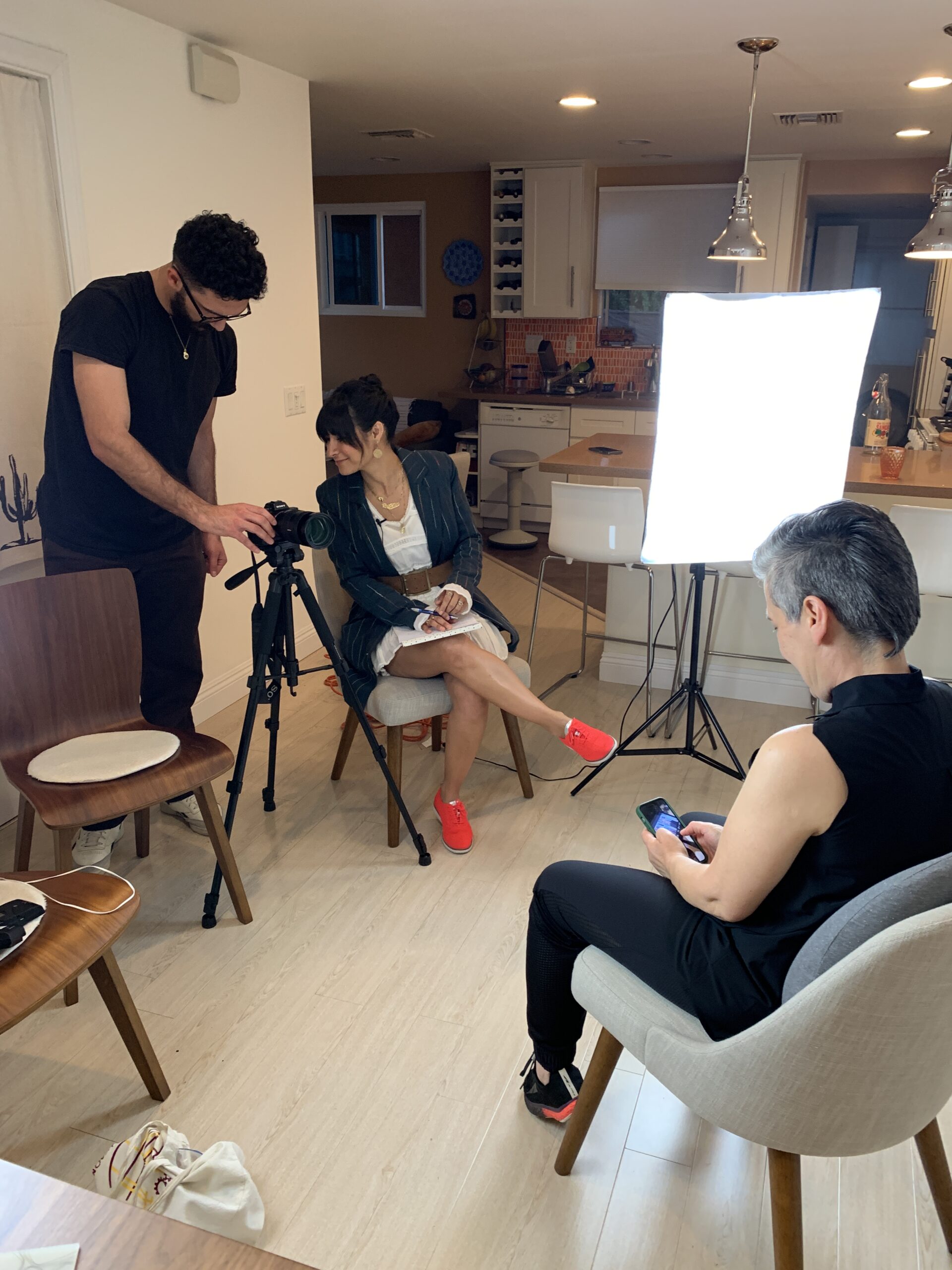California History Through Armenian Experiences
“CALIFORNIA HISTORY THROUGH ARMENIAN EXPERIENCES” HIGHLIGHTS INDIVIDUAL VOICES
Focusing on the power of the individual story, USC Dornsife Institute of Armenian Studies “California History through Armenian Experiences” oral history project documents the diversity and history of the Armenian presence in California. The initiative, supported by the California State Library, is part of the Institute’s continued work in collecting primary source material for academic researchers and educators.

Manuk Avedikyan and Brandon Balayan with Allan Yeghia Jendian.
Interviews for the “California History through Armenian Experiences” project will be conducted through spring 2024 and will become an archive of hundreds of life stories of Armenians living in California. The collection will consist of formal oral history interviews done by a team of professional interviewers as well as crowd-sourced interviews submitted through the Institute’s My Armenian Story project. The interviews will serve as primary source material to understand nearly a century and half of Armenian-American life – including stories of migration, diaspora community development and relations, world and regional events, as well as individual and community contributions to California and beyond. Recorded oral histories will be indexed, archived, transcribed, and made available through USC Digital Libraries and the California State Library.
“The average Armenian life story is an intersection of several histories in one because migration and displacement have been endemic to the Armenian experience. The geopolitical, sociocultural, and sociolinguistic nuances in each story are invaluable for scholars in multiple fields including Armenian Studies, Diaspora Studies, American Studies, Migration Studies, Anthropology, Sociology, and many more,” says Institute Director Dr. Shushan Karapetian.
In 2022, then-State Assemblymember Adrin Nazarian prioritized Armenian Studies by earmarking part of the state budget to accelerate and amplify the Institute’s documentation efforts. The commitment was part of the State’s ongoing work to highlight the diverse scholarship being produced by California institutes and research hubs.
“Now, more than ever, California and Californians are looking to academic institutions to guide us through our history,” says Assemblymember Nazarian. “This opportunity with the USC Institute of Armenian Studies highlights the stories of individuals who – one by one – built the largest Armenian Diaspora in the country and contributed immensely to the fabric of the State of California. We all stand to learn so much from this initiative.”

Dr. Lilit Keshishyan and Manuk Avedikyan after interview with Raffi Santikian.
As a part of the Institute’s academic work, hundreds of testimonies collected through this initiative will serve scholars and educators of multiple disciplines. The recorded life histories provide a primer for researchers and allow for further exploration of the invaluable impact Armenians have made over the last century in the State of California, an under-researched subject in the fields of Armenian and American Studies.
“Through these oral histories, we not only learn about the contributions of Armenians to the State of California, but also expose the cultural threads that run through the state via individuals’ global trajectories, both lived and passed down,” says Dr. Lilit Keshishyan, who is directing the Institute’s California oral history initiative.
The grant supports the Institute to continue and expand the scale and geographic scope of its earlier oral history initiatives. For instance, some oral history interviews will be accompanied by digitized documents and photos – allowing for further contextualization of the Institute’s existing archives of diaspora documents.
Institute staff and a growing team of interviewers with expertise in Armenian communities have been conducting and recording thorough, full-life interviews across California. The public also has an opportunity to become part of the project by submitting interviews through the My Armenian Story crowd-sourced initiative. Anyone, regardless of background, can submit an Armenian story.

Dr. Rosie Vartyter Aroush and Brandon Balayan with Mel Saroyan.
The My Armenian Story initiative adds another compelling layer to the California project.An individual interviewing a grandparent or other family member can learn about how larger events have impacted both the world and especially their family and peers.
“Understanding how an individual confronts the military draft during the Vietnam war in Los Angeles, decides to immigrate after surviving the 1955 pogroms in Istanbul, grapples with the agricultural crisis in 1980s Central Valley or navigates through various stages of US immigration policies are only some of numerous intersections of the personal and the historical,” says Manuk Avedikyan, education and outreach manager for the Institute.








